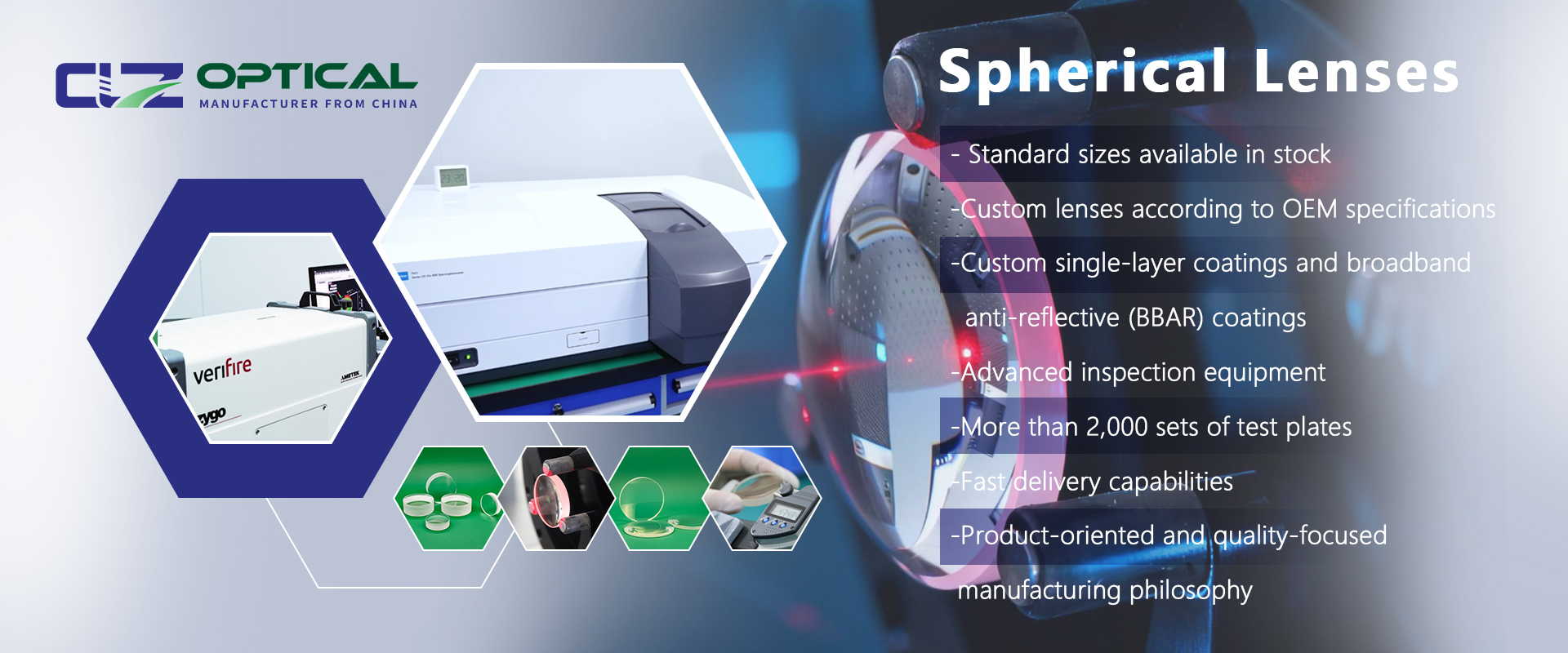What is the Difference Between Spherical Lens and Aspheric Lens?
Dec. 07, 2020
In the field of optical components, spherical and aspheric lenses exhibit functional differences due to their geometric configurations. The core distinction lies in surface curvature design: spherical lenses feature uniform, symmetric spherical-section curvature, while aspheric lenses adopt complex irregular surfaces in optical systems.
1. Core Characteristics Comparison
1.1 Surface Geometry
Spherical lenses maintain constant surface curvature with circular cross-sections. Their rotational symmetry simplifies manufacturing but induces aberrations during light transmission.Aspheric lenses exhibit gradient curvature from center to edge, forming high-order curves (e.g., parabolic curves). This design enables precise light path control but demands extremely high machining accuracy.
1.2 Aberration and Chromatic Dispersion Control
Uniform curvature in spherical lenses causes inconsistent refraction angles between marginal and central rays, preventing convergence at a single point (spherical aberration). Simultaneously, focal position separation for different wavelengths (chromatic dispersion) degrades image clarity. To compensate for chromatic dispersion, spherical lenses often adopt cemented structures—bonding convex and concave elements with different refractive indices. For example, combining crown glass (low dispersion) and flint glass (high dispersion) counteracts wavelength dispersion effects. Aspheric lenses correct light paths through gradient curvature, reducing laser focusing errors to micron levels and significantly mitigating chromatic dispersion, making them suitable for high-precision optical systems.
1.3 Cost-Performance Balance
Aspheric lenses rely on precision molding or polishing techniques, resulting in extended production cycles and lower yields, with per-unit costs substantially higher than spherical lenses. Their advantage lies in reducing component count to decrease device weight (e.g., smartphone camera modules) while enhancing light transmittance through fewer optical interfaces.
2. Hybrid Optical Design for Space Optimization
In precision optical system development, spherical lenses serve as fundamental components due to their proven reliability. For space- and weight-sensitive devices such as camera lenses for photography, cinema lenses, and medical endoscopes, engineers implement collaborative solutions combining spherical and aspheric lenses. A single aspheric lens can replace multiple spherical lens groups, directly reducing component count and shortening optical paths while maintaining core optical performance. Aspheric elements correct spherical aberration and field curvature distortions, while spherical elements provide stable refractive power. This synergy achieves system miniaturization without compromising imaging fidelity.




















